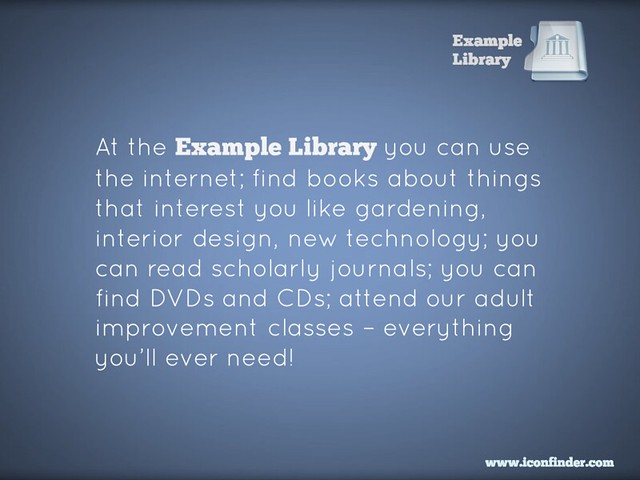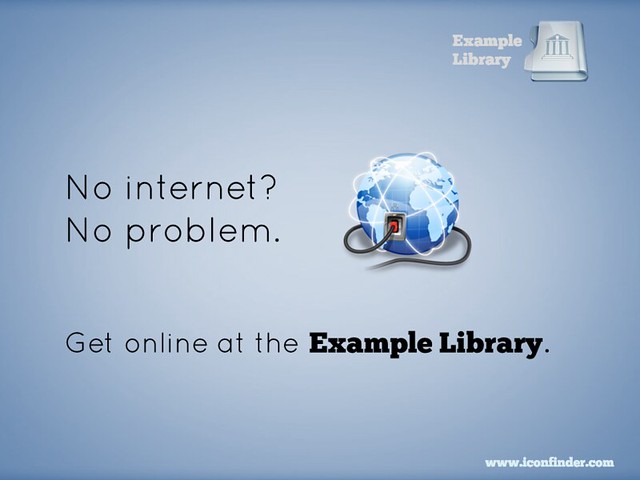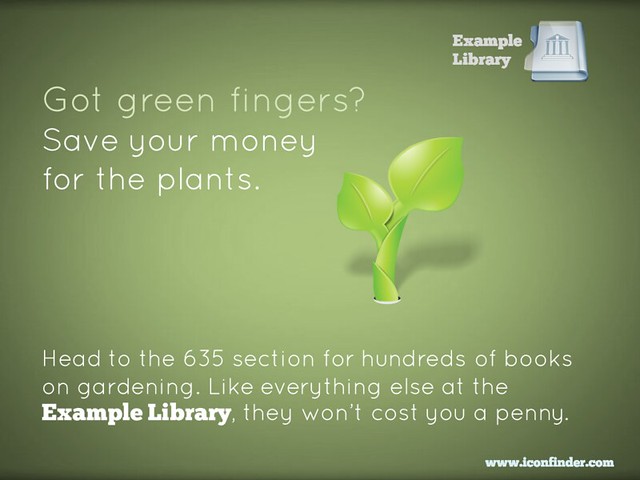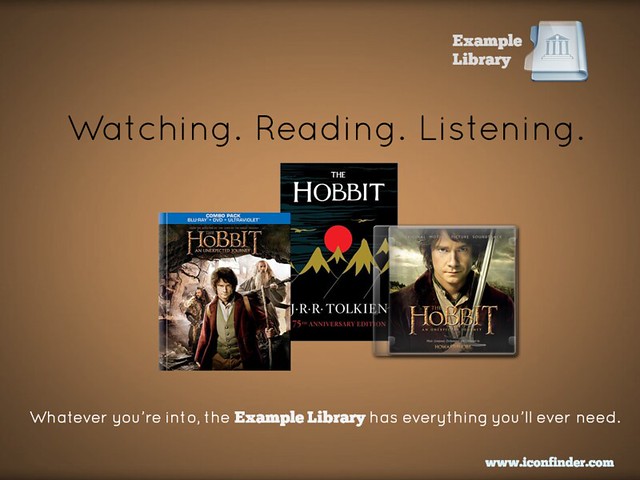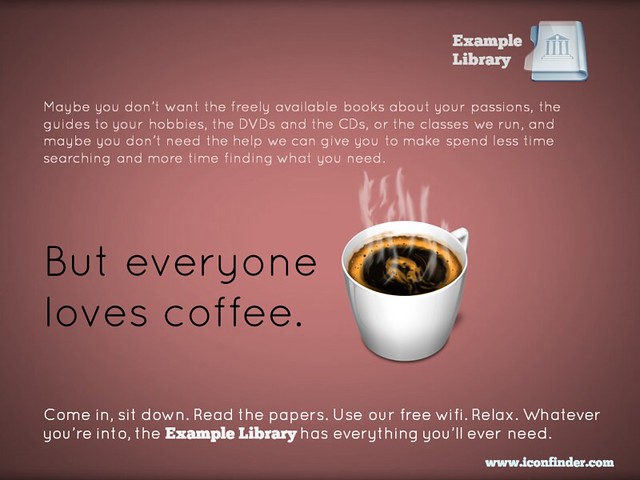It's now around 6 months since I published my book, the Library Marketing Toolkit. This post is an update on how it's going, so if you're not interested in that, stop reading now! This post is reflective to the point of self-indulgence so feel free to skip it...
Generally I've tried to keep the Toolkit blog and this blog very separate as I know some people subscribe to both, so I've not talked too much about the book on here - I'm breaking that tradition as a bit of a one-off, half a year down the line from publication.
Back story
I wrote a book across 2011 which was published by Facet in August 2012 - it's all about marketing libraries and it has 27 case studies from libraries and librarians around the world. I found writing the book very tough - the writing itself was okay, but juggling it with having a baby at the same time was nightmarish! My wife and I knew it would be difficult, and took the decision that it would be worth it for the opportunities it would open up; thankfully that has proved to be the case... I'm doing a lot of freelance stuff which I probably wouldn't get the chance to do otherwise and I'm really enjoying it, and people are finding it useful.
Reception
The book has, Facet tell me, sold very well (as these things go - the actual number is still very small of course!). Amazon.co.uk charts change every day so it's impossible to keep track of when it's doing well (I don't want to be obsessively checking...) but on several occasions I've seen it at the top of the Library Management Charts, and taken a print-screen to celebrate!

I like the Amazon.com one better as you get a little '#1 best seller' thing on there...

People have been really nice about the book on Twitter, and I've favourited the tweets with the LibMarketing account to refer back to. Several people have said they've found it invaluable in their job or their studies, and I particularly like Dr Fidelius's comment that it was 'Far more readable than a book on marketing has any right to be'! It's so nice when people pick up on something you worked hard on. :)
Reviews
Reviews trickle out REALLY slowly. You build up to the huge push of submitting the final manuscript, and then with much relief you think 'I don't have to worry about this any more!'. But THEN you think, oh blimey, reviews - how well will I deal with someone absolutely savaging it..? And then no reviews appear! So it's a bit anti-climactic.
Facet warned me it took AGES for reviews to happen (people do have to read the thing from cover to cover after all, and then there's the publishing process if the review is in print) and that often a year was a typical waiting time, so I was sort of prepared for this. (Library Journal are yet to review it and I'm a columnist for them!) We had various pre-publication reviews from people who were sent advanced copies of the book:
- The Library Marketing Toolkit is packed full of useful, informative and above all practical information about the best ways of getting your message across, and it should be on the shelf of every librarian and information professional | Phil Bradley
- The Library Marketing Toolkit is brilliant and a great addition to the library professional discourse | Andy Woodworth
- Ned Potter's book will help any library succeed in creating a community that is aware and engaged in its library. He has written an easy to follow tool kit targeted at the specific marketing needs of librarians that is sure to become a favourite resource for anyone involved in marketing a library. There are case studies from libraries around the world that will inspire you no matter whether your library is large or small. You'll love this book! | Nancy Dowd
.
Since then I've found various other reviews from journals, book review blogs etc - all of which, thankfully, have been very positive!
- Potter's enthusiasm is infectious and he writes in a user friendly manner, not getting caught up in jargon. Concepts are explained concisely with a liberal dosing of analogies and case studies. The aim and scope of each chapter is laid out clearly from the outset and there is a useful synopsis of coverage in the introduction as well as a comprehensive index enabling readers to browse areas of interest.The Library Marketing Toolkit follows on from Facet publishing's New Professionals Toolkit published earlier this year and is certainly a useful addition to the Library office reference collection. It should prove beneficial to anyone involved in the marketing or promotion of library or information services. | CILIP Health Libraries Group Book Reviews
- So the questions for me on opening this book were “do we need another book on marketing libraries”, and “does this one offer anything different?”. And I am happy to say that this is not a traditional marketing text. It offers a contemporary perspective on what marketing means for libraries now ...my answers are “yes we do need another book on marketing libraries” and “yes it does offer something different”. This book showcases the best of contemporary marketing practices from libraries all over the world. The case studies with the author's illuminating focus on key points of learning are, for me, the added value which differentiates this book from other marketing books.| Library Management Journal
- That word—marketing—means so many different things to different people. In Ned Potter’s book The Library Marketing Toolkit, the complex process is divided up into distinct and manageable interdependent projects. I am certain I will be referring back to The Library Marketing Toolkit for years to come.| Kendra Book Girl
- From social media to old fashioned methods, and how to build a good brand, this scholarly and comprehensive guide will prove invaluable to any librarian who seeks to get the word out. The Library Marketing Toolkit is enthusiastically recommended, not to be missed | Midwest Book Review
.
It's also got an average of 4.5 stars (out of 5...) on goodreads, and its only Amazon review so far is a 5 star one - yay!
No more books!
When I finished the Toolkit, I said 'never again'. The stress of writing a book in my own time, working full-time, and trying to be a proper Dad who didn't put work first, was just too much. And everyone - EVERYONE - told me, 'all authors say that but give it a while and you'll miss it, and you'll end up writing another one'.
Well, I can confirm I do NOT miss it! And I won't be writing another book - I did get asked to write one on Prezi, and I said no without hesitation. I'm delighted with all the stuff above, and maybe one day, if I'm working part time and the kids are at University or something, but for now: no more books.
:)

